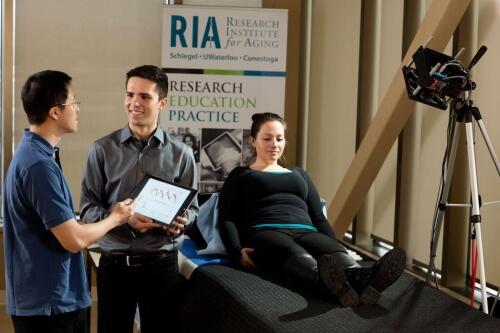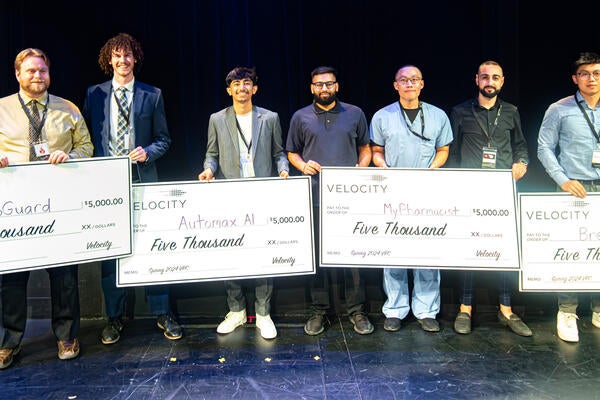Researchers at the University of Waterloo have developed a revolutionary system for monitoring vital signs that could lead to improved detection and prevention of some cardiovascular issues, as well as greater independence for older adults.
Using patent-pending technology called Coded Hemodynamic Imaging, the device is the first portable system that monitors a patient's blood flow at multiple arterial points simultaneously and without direct contact with the skin. It is ideal for assessing patients with painful burns, highly contagious diseases, or infants in neonatal intensive care whose tiny fingers make traditional monitoring difficult.
"Traditional systems in wide use now take one blood pulse reading at one spot on the body. This device acts like many virtual sensors that measure blood flow behaviour on various parts of the body. The device relays measurements from all of these pulse points to a computer for continuous monitoring," said Robert Amelard, a PhD candidate in systems design engineering at Waterloo and recipient of the prestigious Alexander Graham Bell Canada Graduate Scholarship from the Natural Sciences and Engineering Research Council of Canada. "By way of comparison, think of measuring the traffic flow across an entire city rather than through one intersection."
Continuous data collection at different parts of the body provides a more complete picture of what’s happening in the body. Whole-body imaging opens doors for advanced monitoring that can’t be done with the traditional, single-point methods.
“Since the device can also scan multiple patients individually at once and from a distance, consider the potential in mass emergency scenarios or long-term care homes,” said Professor Alexander Wong, of the Faculty of Engineering at Waterloo and Canada Research Chair in Medical Imaging Systems. “This technology provides for a more predictive approach to monitor vitals and the potential for its use is extensive, such as indicating arterial blockages that might otherwise go undetected, or warning older adults who risk falling as a result of getting dizzy when they stand.”

Professor Alexander Wong and Robert Amelard at the Schlegel-University of Waterloo Research Institute for Aging analyzing blood-flow data extracted with their new touchless device, pictured right. (Credit: UWaterloo/Fred Hunsberger)
Amelard won an AGE-WELL award in Technology and Aging earlier this year to support the development of his system to help enhance or maintain older adults’ independence. He is the lead author of the recent paper in Nature’s Scientific Reports that details part of the technology behind the device.









